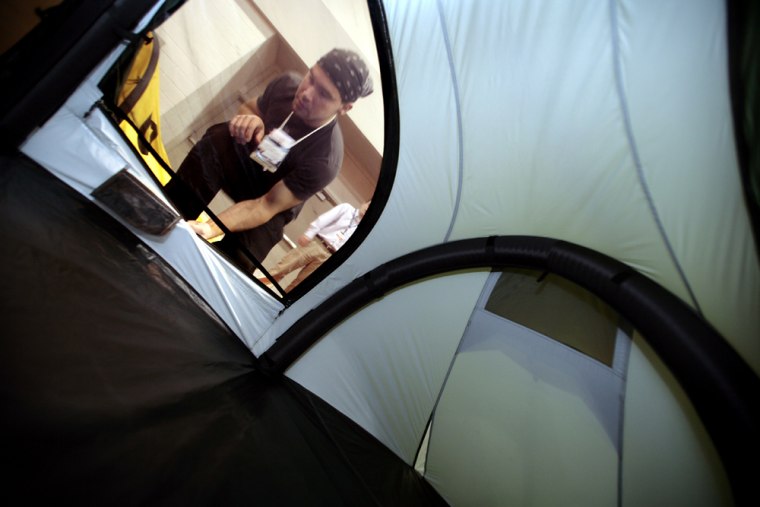Clothing meant for more than just wearing and the first mountaineering tent to stand up on its own without poles are among innovations on display at the Outdoor Retailer winter show here.
These days outerwear doesn't just get worn, it does something - it can keep you toasty with battery-powered heating coils, fight body odor, require less washing or glow with luminescence.
The semiannual Outdoor Retailer show, held in Salt Lake City in October, had 724 U.S. manufacturers displaying goods for retailers from around the world. The show featured the latest advances in apparel and gear and would make an avid consumer drool, but the public wasn't allowed inside and manufacturers took only bulk orders for sale.
Here's a look at some of the latest outdoor gear and clothing.
More winter jackets are now coming equipped with an electronic signature that can help rescuers find a skier who gets lost or caught in an avalanche. The thumb-size RECCO reflectors, attached to jackets, work with proprietary detectors being deployed by ski areas in the West after gaining popularity in Europe.
The reflectors are no substitute for avalanche beacons that can help one backcountry skier dig out another in a hurry. Only professional rescue crews are using RECCO detectors, and a buried skier who has to wait for their arrival is more likely to die. The system is more useful for finding skiers who get lost in the woods - or for finding bodies.
The jacket of the future also could guard a skier against a hard fall. Spyder Active Sports Inc. is using a new, flexible material inside Olympic race suits that instantly stiffens on impact to protect elbows and shins.
"You can hit it with a hammer, and it absorbs the blow," said Tommy Moe, the gold-medal winning U.S. Olympian at the 1994 Winter Games.
Moe said the new material replaces a padded undergarment skiers wore that didn't always spare his arms from welts when his upper body hit slalom gates. Spyder is making the suit available for U.S. and Canadian Olympic team skiers.
Also part of apparel's future are multicolored, luminescent "threads" that take their power from tiny batteries.
"We'd like to light the outdoor industry," said Avi Timor, president of Elam USA Inc., showing off coils of electroluminescent wire, which can be woven into everything from clothing to dog leashes and already has found a place in toys and games.
"Everywhere we go, we get the 'wow,'" said Timor, who predicts that tent manufacturers will soon offer tents wired for light so hikers can find them in the dark.
Many tents have shed the rainfly, using waterproof, breathable fabric to save weight, but Nemo Equipment Inc. of Nashua, N.H., is out with a tent that doesn't even need poles, using inflatable air bladders instead for support.
"They are the BMW of tents," says Cam Brensinger, a Rhode Island School of Design graduate who developed the 4.8-pound Morpho ($565), a roomy tent for two that packs almost as tight as a loaf of bread. An even lighter version, at 2.8 pounds, goes for $395 and packs into the size of a cantaloupe.
The tents can be set up within minutes with a tiny hand or foot pump that fills airtight fabric chambers that turn remarkably stiff under pressure, letting the tents absorb and rebound from high winds that could snap an aluminum pole.
The concept isn't far from the space suit of the future that Brensinger helped NASA develop for a possible manned mission to Mars to replace more cumbersome 280-pound suits. He worked on designs meant to be lighter and easier to use.
Brensinger's tents have other nifty features like a window, a retractable canopy for warm nights and multiple doors and vents.
